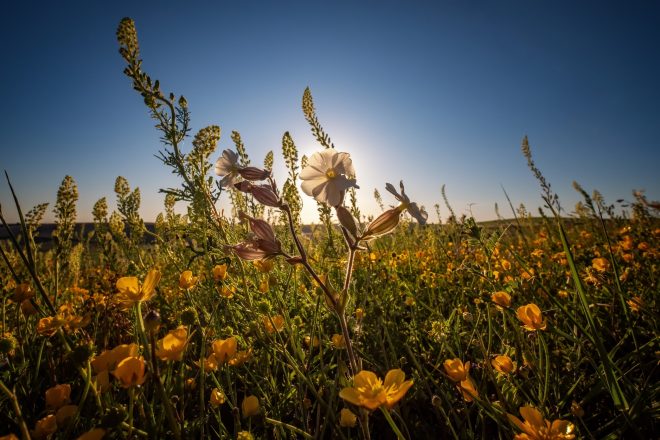Creating flower-rich verges to help pollinators bounce back
November 3, 2021

An innovative project is exploring the potential for grass verges to become important havens for wildflowers, insects and pollinators to help tackle the biodiversity crisis.
The three-year pilot scheme is being spearheaded by a partnership of West Sussex County Council and the South Downs National Park Authority.
The research will focus on the potential benefits of removing grass cuttings (known as arisings) from the grass verges alongside our roads.
Traditionally, verges are mown and the grass cuttings are left on the ground to decompose, enriching the soil which encourages coarser grasses to dominate and outcompete any wildflowers.
Removing the cuttings means that the soil is not enriched with nutrients. Without the soil enrichment, a variety of wildflowers are able to grow and provide habitat for bees, butterflies and other insects.
Using special equipment, the process of removing cuttings is currently being trialled by West Sussex County Council at verges in the Chichester District of the National Park, including Midhurst, Rogate, Bury and Lurgashall.
The National Park Authority, working with ecological surveyors The Ecology Co-Op, will be leading on the biodiversity monitoring over the next three years. The surveys will look at the impact of the “cut and collect” system on the diversity of flora and fauna.
Andy Beattie, a Countryside Policy Manager and who is leading the project for the National Park Authority, said: “This is a really exciting pilot project to see whether this fairly simple change to how our verges are cut can give nature a real boost.
“There’s strong evidence that pollinators everywhere have struggled in the past four decades, with a recent study showing that a third of British wild bees and hoverflies are in decline. Without action, some of these species that are vital for biodiversity and food production could even become extinct nationally.
“The good news is that grass verges full of wildflowers can act as ‘highways’ for these pollinators, providing much-needed habitat and also linking up their foraging areas. We’re looking forward to seeing the results of this trial and seeing how it complements our wider nature recovery strategy for the National Park.”
